A Botswana safari excites all the senses. This Southern African country is one of the world’s final wildlife refuges, where wild animals outnumber people.
Here you count elephants in herds, rather than individuals. There are more lion prides than roads or cities. It’s mostly raw wilderness, where rain writes the script and animals act out a daily drama.
Dream of buffalo and giraffe skipping around the Okavango Delta. Elephants charging about the Chobe woodland. Black-maned Kalahari lions stalking gemsbok. Or zebra wandering the world’s largest salt pans.
If you want a basic big five safari then look elsewhere. Botswana requires time and effort. It’s a landscape without borders, where people can only be visitors.
But if you want the complete safari experience then read on. No other country has a greater variety of habitats, nor such an abundance of the largest land mammals on earth. And nowhere else can you get so close.
This beginners planning guide shows you the places to go; the wildlife you’re going to see; famous and unknown experiences; plus essential planning tips.
Essential Information for Visiting Botswana

Here’s a tale from one of Africa Freak’s contributors to get you in the mood for a Botswana safari.
“While erecting my tent on the riverside the camp manager came over. ‘Watch out for hippos at night’ he said, ‘last week one of them demolished a Toyota Landcruiser in the car park. Be careful for crocodiles as well – one guest woke up as his tent was being dragged into the river.’
“He gave me a safety leaflet. It read, ‘keep your tent closed at night, as hyenas can bite your face off.’”
A Botswana safari is this wild. You can read more about this tale of animal kingdom refugees in this newspaper article.
Where is Botswana and how do I get there?
Botswana is a large landlocked country in Southern Africa, between Namibia, South Africa, Zimbabwe and Zambia.
A lack of international flights keeps the country off tourist radars. Maun is the key gateway town for an African safari. You can fly here from Johannesburg or Cape Town, along with a small handful of other Southern African cities.
Many people enter Botswana from Victoria Falls, which is just 50 kilometres over the border in Zimbabwe and Zambia. The easiest and cheapest way to visit Botswana from Europe is a flight to Victoria Falls or Livingstone, followed by an overland journey.
Why should I visit Botswana?

Safari. There is no other attraction here. Just animals, ancient landscapes, and a real connection with your wild side.
There are more large mammals here than there are people – just let that sink in for a moment.
What landscapes animals will I see on a Botswana safari?
Botswana safaris are so unique because you can combine a remarkable range of habitats. Every habitat has its own cast of resident animals – combine destinations and you see a profusion of them all.
Chobe is a woodland in the northeast. It’s home to more wild elephants than anywhere else in the world.
The woodland opens out into riverine forest and lush savannah. This is a haven for buffalo, many of Africa’s largest antelope species, plus all sorts of predators. Of course you’ll see lions. Botswana is also the best place in Africa to spot rarer hunters, like wild dogs.
Continue south and the landscape turns to the Kalahari Desert. This desert is enlivened by the great Okavango Delta, a huge oasis that provides sanctuary for many of Africa’s great mammals. You’ll encounter just about everything here, other than rhinos.
How long do I need for a Botswana safari?

In South Africa you can go on safari for three hours in a private reserve. In Botswana we wouldn’t recommend anything less than one full week.
It can take a long time to travel between destinations but you never leave the wilderness. 🙂
One week is also the minimum to combine the three key landscapes: Kalahari Desert, Okavango Delta and Chobe.
Come on a two-week holiday and we’d recommend ten days in Botswana, followed by a few days in Victoria Falls. Read our detailed Victoria Falls guide here.
What will a Botswana holiday cost?
Botswana safaris cater for almost all budgets. Exclusive safaris involve flying between destinations in light aircraft and staying in private reserves. Expect this to be upwards of USD 700 per person per day.
A more affordable adventure is to rent a four-wheel drive and camp within national parks. There are many excellent campsites costing just USD 20 per night. With a budget of USD 200 per day you can have a very comfortable safari, in some of Africa’s wildest places.
Why is Botswana Such an Incredible Safari Destination

Botswana is a favourite of the safari aficionados, people who return to Africa year upon year. First-time visitors mostly stick to South Africa and Tanzania, where the safari can be shorter and easier to arrange.
In Botswana you’ll be fully immersed in the wild. Think lion roars penetrating the still night sky; elephants wandering along the highway; opening the tent to enormous antelope herds; bumping across desert, getting stuck in a swamp, and facing down a buffalo herd at dawn.
The settings are wonderful. So are the animals. All the different safari activities are possible. And with no fences or barriers, you get closer than anywhere else.
In a country of desert most life sticks close to water. So it’s pretty easy to find all the animals, even without a guide.
Choose somewhere else if you want to take a photograph of a lion, then post it on Instagram.
Choose Botswana if you love wildlife and want a really wild adventure in some of the world’s most unique landscapes. You must be comfortable being out in the bush for many days, without Wi-Fi or certain creature comforts.
Unique safari experiences in Botswana
- Do your own safari by renting a four-wheel drive and camping in the wild.
- Boat along the flooded waterways of the Okavango Delta.
- Surround yourself with the world’s largest elephant and giraffe populations in Chobe.
- Track wild dogs in one of their few remaining refuges.
- Explore the world’s largest salt pans – the Makgadikgadi – on a quad bike.
- Cross the Kalahari Desert in search of rare black-maned lions.
- Take a walking safari and a horseback safari in the Okavango’s big-game heartland.
- Paddle past the hippos on a traditional makoro canoe.
- Encounter elephants crossing the country’s main highway.
- Spend long evenings on nighttime game drives, a great opportunity to spot prowling predators.
Safari experiences common across Botswana

- Mixing up different safari activities in one day.
- Being surrounded by big mammals, particularly elephants and buffalo.
- Getting lost in the wilderness – there are no signposts out here!
- Staying at a basic campsite and listening to the sounds of the wild.
- Learning to identify a wide variety of antelope species.
- Finding yourself along the water in a country dominated by desert.
When to go on a Botswana Safari – Month by Month Guide
Botswana has two very distinct seasons. One is perfect for an Africa safari, from May or June to October or November. The other is uncomfortable and the game viewing is not ideal.
May / June to August – Cool and dry; good game viewing

- The winters in Botswana are dry. Temperatures are cool and comfortable during the day, then get cold at night.
- The Okavango Delta comes into full flood, at a time when most of Botswana turns bone dry. 🙂
- Many animals migrate into Botswana for its abundance of water now; game viewing is easy.
- This is peak season for a Botswana safari, with the most visitors and most expensive prices.
September to October / November – Height of dry season; stunning game viewing
- Parts of Botswana haven’t seen rain for almost six months now; it’s dry and dusty.
- Game viewing is superb as wildlife congregates around the few remaining waterholes and rivers.
- The Okavango Delta is receding but it’s still a wonderful safari experience.
- Temperatures are very manageable, during the day and night.
November to January – The rains begin; the safari continues

- Botswana heats up and by December it is sweltering during the day. This becomes uncomfortable for long overland journeys.
- It’s also humid, with downpours on many days throughout the month.
- Rain disperses wildlife and you won’t see as much during these months.
February to May – Off season; better for specialist safaris
- It continues to rain briefly through February and March.
- Gradually the climate cools and switches to dry season conditions.
- Rivers and waterholes are high; game viewing can be disappointing in most of Botswana.
- However, this is the best time of year to visit the Makgadikgadi Pans.
What to Do on a Botswana Safari

In Botswana it feels like you are getting closer to nature, because you can explore from all the different angles. A typical safari program is much more than a bumpy ride across the desert!
Gaze up at elephant trunks from the water. Walk safely in lion and leopard country. Horseback across endless Kalahari desert. Then drive at night and follow the predators on their hunting expeditions.
When planning a Botswana safari you should try to include the following experiences. The focus of your safari will depend on your destinations – see below – but with seven to ten days you can explore diverse landscapes by diverse means.
Game drives during day and night – The mainstay of most safaris and the best way to cover a large amount of ground. During the day it’s a bumpy adventure. At night you travel slowly and the ambiance is almost haunting.
Walking or riding activities – It feels more real when there isn’t a vehicle to protect you. And the silence helps tune more of your senses into the wilderness. These activities skillfully stay clear of predators and large mammals. Instead they celebrate the intimate beauty of smaller animals.
Mokoro canoe safari – Mokoro are traditional wooden canoes perfect for exploring narrow waterways. A local gondolier propels you through the wilderness and you may be just a few metres from the shore. It’s a silent mode of travel so wildlife isn’t spooked. This is brilliant for appreciating big and small game along the water.
Motorboat safari – Motorboats are nosier but can cover long stretches of river and delta. In a country where so much revolves around water, motorboat activities are a little like game drives.
Where to Visit in Botswana for an African Safari

These destinations are detailed from northeast to southwest. It is possible to connect them on an overland safari. This is also the easiest route when flying between destinations.
Each of these destinations are immense wilderness areas. They typically incorporate a national park along with a series of private concessions. You can also read more about Botswana safari destinations here.
Victoria Falls (in neighbouring Zambia and Zimbabwe)
These famous falls are just an hour across the border, making them a very popular place to start or end a safari.
Chobe National Park

Elephants maraud through the Chobe woodland. In dry season they migrate here from Zambia, Zimbabwe, Namibia and the Kalahari Desert.
Perhaps you can picture what it is like to encounter an elephant herd. Maybe you can imagine seeing 100 elephants in one panorama. But try 100,000! That’s how many pachyderms in Chobe during dry season.
They’re joined by great numbers of giraffe, another ubiquitous piece of the landscape. Hippos crowd around the Chobe River while predator viewing is best around the Savute Channel, deeper into the park.
Chobe can be visited on a day trip from Victoria Falls. The wilder and more interesting areas are deeper in the woodland, requiring at least an overnight safari.
Excellent national park campsites dot this wilderness, along with some very affordable lodges. Don’t expect to see a variety of life. The dense woodland is difficult for predator viewing and the highlight is always about getting intimate with elephants and giraffe.
Kwando, Linyanti & Selinda
Stretching west and south from Chobe, these private reserves offer some of Africa’s most exclusive and evocative game viewing.
These are some of the largest private reserves in Africa, offering high concentrations of wildlife along the Kwando–Linyanti river system. You get the woodland of Chobe – i.e. elephants and giraffe – mixed with Okavango-style floodplains, riverine forest and open grasslands.
Wildlife migrates freely between these unfenced reserves, as well as onward to the Okavango and Chobe. There’s a real mix of everything – sable, impala, red lechwe, kudu, baboon, warthog, tsessebe, wildebeest, giraffe, hippo, elephant, eland, roan, impala, and many more.
However, the real attraction is all the big game. These reserves are the best destinations in Botswana for spotting predators, including rarer hunters like leopards and wild dogs. You can track these predators on a hunt and will regularly encounter them with a carcass. Read more about why the wild dog is endangered here.
Exclusivity reigns. You can only visit these reserves by staying in one of the reserves’ camps. They are expensive but never crowded. Most visitors fly into one of the reserves and stay for three to four days.
Okavango Delta, including Moremi Game Reserve

Every winter, in the height of the dry season, the Okavango Delta floods. How? Rain falls in the Angolan Highlands then takes four to five months to reach Botswana. Upon reaching the flat Kalahari Desert the Okavango River bursts, creating the world’s ultimate oasis.
Water is king in the desert. Animals arrive in the Delta from all directions. Zebra skip in the shallows. Leopards swim across rivers. Ecstatic elephant herds celebrate by splashing their trunks and squirting water.
Some of the water stays all year around. Flooding creates a labyrinth of channels and islands, washing away the dirt roads, making travel easiest by boat or canoe.
It’s a spectacle clearly visible from space, an ever-evolving animal kingdom. You can view over 100 different mammal species and there’s an abundance of just about all the famous animals, except for rhinos.
Different Okavango destinations
The Okavango Delta is divided into more than 20 different blocks, or concessions. Most of these are privately operated. Note that there aren’t any roads here; just muddy tracks either above or below the water line.
Concessions to the west are closest to the river. They flood first so most of the safari programs take place on the water, including motorboat and makoro canoe safaris.
There is less water to the south and east, where it’s easiest to take your own vehicle. Safari programs here are more focused on game drives and walks.
The most exclusive reserves are predominately to the north, where the Okavango blurs towards the Chobe, notably around the Savute Channel.
Moremi Game Reserve is at the heart of the Okavango Delta and is not private. Anyone can visit. However, most of Moremi can only be reached by air so it’s not necessarily a cheap safari destination.
Chief’s Island is the game-rich heart of both the Delta and Moremi. Wildlife lives permanently on the lush island interior, while migratory animals stay around the palm- and reed-fringed island from June to October.
Planning an Okavango safari
The heart of the Okavango is greener and wetter. It has most of the food and water, so inevitably attracts the great majority of wildlife.
Most budget safaris take visitors to the less-desirable Okavango outskirts. While you can do a cheap safari elsewhere in Botswana, with the Okavango it’s really worth splurging and getting into the midst of the oasis.
If it’s within budget then consider two destinations; one dry and one wet. This will reveal the Delta’s dramatic diversity and offer the complete program of activities.
Maun
Maun is the only town for many hundreds of miles. It’s a gateway for most of Botswana’s safari destinations. International flights land here and you can connect onto local safari flights.
Maun is an essential stopping point on an overland journey. Come here to restock on supplies, check your emails, and drink a cold beer in a local camp bar.
Central Kalahari Game Reserve
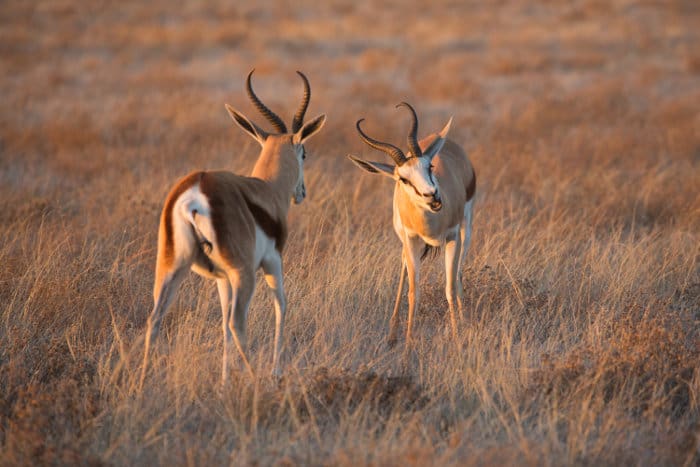
Beyond the Okavango River there is nothing. Just dry, empty desert. Think bumpy tracks, golden sunsets, eerie silence and wild adventure.
In the Kalahari you find some of Africa’s most remote destinations. It’s the favourite place of British princes Harry and William; they wooed their future brides to be beneath the dazzling Kalahari stars.
You don’t need to stay in one of the top camps. The Central Kalahari is ripe for a self drive adventure. But watch out – black-maned Kalahari lions are just one of the local residents.
Wildlife in the desert clusters around waterholes. With a little patience you’ll encounter a lot of life here, including gemsbok and elephant. And you’ll escape the everyday in one of the wildest places on earth.
Makgadikgadi Pans National Park, including Nxai Pan
The world’s largest salt pans are located to the east of the Central Kalahari Game Reserve, due south of the Okavango Delta.
There was once a lake the size of Switzerland here. Now there is mostly salt, punctuated by the odd baobab tree or zebra herd.
Makgadikgadi shimmers white, a mirage forming along the horizon. Somehow, out of this wilderness, comes life. Most of the world’s meerkats live here. 30,000 zebra migrate across the pans from February to May. Sometimes you spot an elephant emerging on the horizon.
The majority of the game is found around Nxai Pan, along with most of the camps. Here you settle into a surreal silence and gaze out at the majesty of nature.
Makgadikgadi is best reached with your own vehicle. Stay at one of the camps and you can organise a quad bike safari across the pans (it’s not possible to take your own vehicle across the fragile salt).
Kgalagadi Transfrontier Park

Bordering Namibia and South Africa, Kgalagadi is a great place to break an overland journey across Southern Africa.
You can camp in the wild, beneath the stars, listening to the call of lions and buffalo. You can drive dusty trails and not see anyone else for the entire day. It’s cheap, adventurous and an easy stop when driving between South Africa and Botswana.
Mashatu Game Reserve & the Tuli Block
Located in the far southeast of the country, the Tuli Block is a series of private reserves that provide easy and exclusive Botswana safari.
Mashatu is the most famous destination and is connected to both Kruger and Johannesburg by safari flights.
All the reserves here provide a compact and relaxed safari experience. It’s less of an overland adventure so more suitable for older or younger visitors who don’t want to be driving around all day.
Expert Botswana Safari Planning
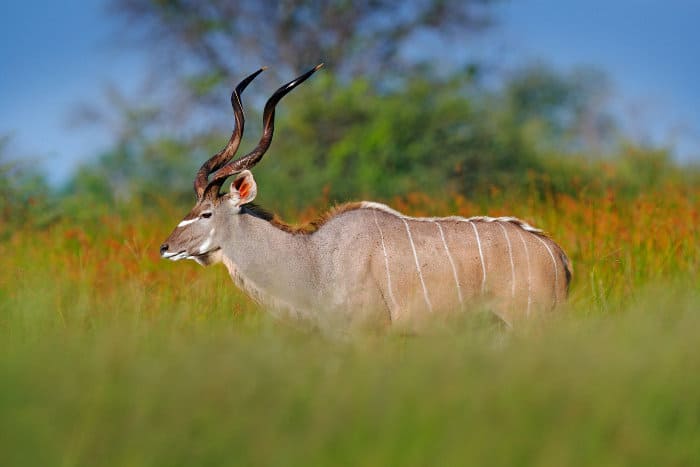
Visit South Africa or Kenya on safari and you don’t necessarily need to plan. It’s possible to arrange a safari once on the ground.
A Botswana safari requires expert planning. You’re going deep into the bush and that’s dangerous without good preparation.
Africa Freak partners with top-rated safari operators who can provide detailed planning advice for maximising your time in Botswana.
Also consider contacting different camps to check prices and the activities offered. For an overland safari you must rent a good four-wheel drive vehicle and book your national park campsites.
There’s so much to consider, including staying away from dangerous hippos and creepy hyena!
That’s why this article can only ever be a beginners planning guide. Now you must do your own research to make the Botswana safari adventure happen.

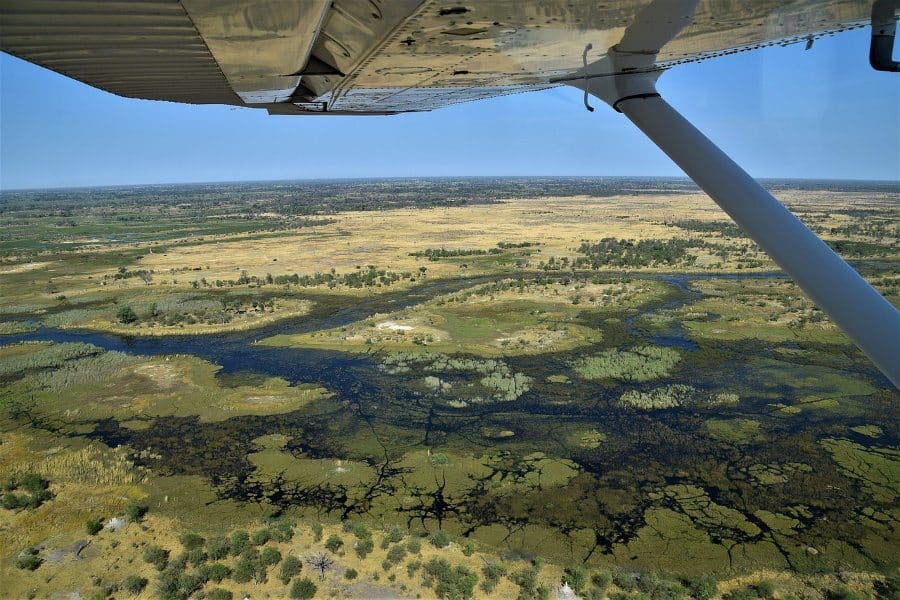
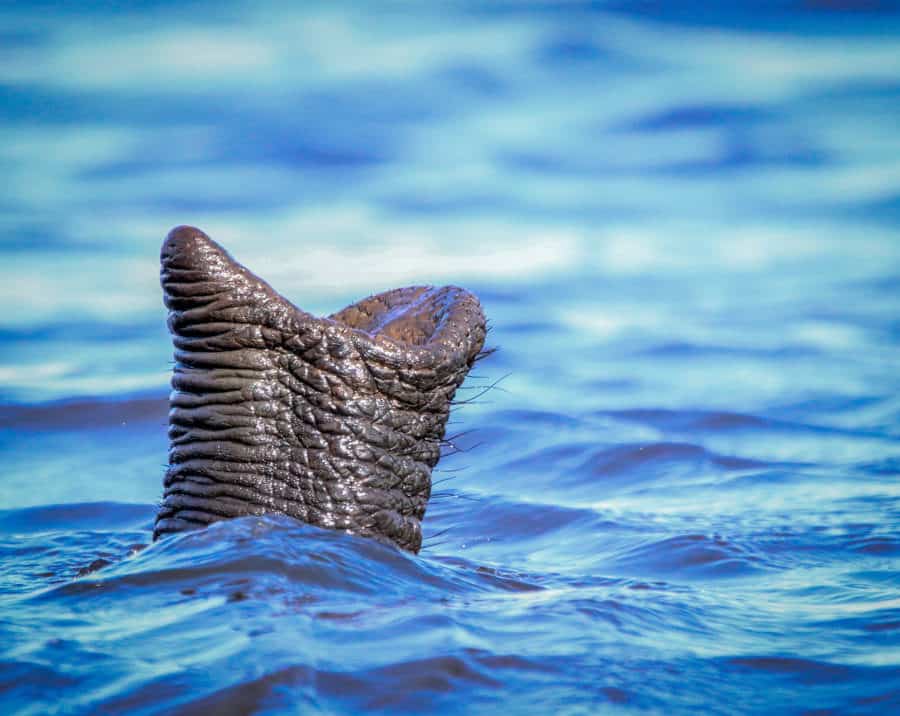
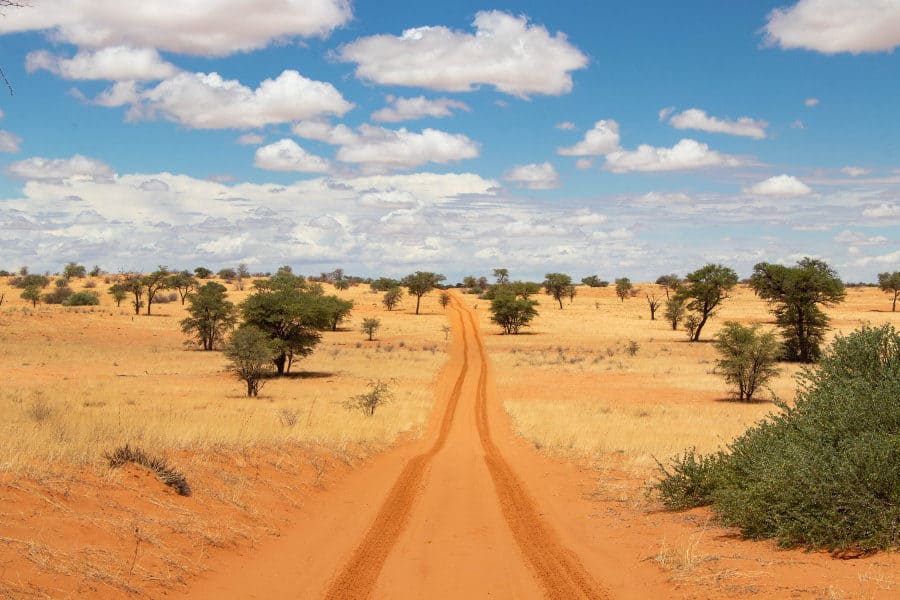
I really enjoy the photographs displayed in the recent posts, if you could send forth some for me to show for the children at school.
Hi George,
Thanks for your message.
Most images on our site are copyrighted.
That being said, you are welcome to use Africa Freak to show some of them to your students (via the Internet).
Or feel free to contact us for more info.
Kind regards,
Michael